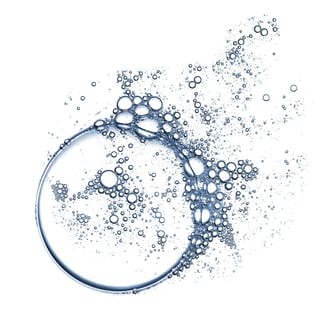 There are countless different manufacturing processes out there. Even when two different companies are making similar products, their processes will rarely be the same. The stock baskets and materials handling containers that come with some processing equipment cannot possibly account for every factor that makes a given parts finishing process unique.
There are countless different manufacturing processes out there. Even when two different companies are making similar products, their processes will rarely be the same. The stock baskets and materials handling containers that come with some processing equipment cannot possibly account for every factor that makes a given parts finishing process unique.
This is why so many manufacturers use custom steel wire baskets for their parts finishing and washing processes. A customized design that is tailored to your process can help to improve efficiency, reduce parts rejections, prevent scratches, and remain useful for a longer period of time compared to stock baskets.
Custom baskets for a given process may incorporate many different design features, from specific steel alloys, such as grade 304 or 316 stainless steel, to dividers, to lids, to specialized coatings. One popular basket coating for many manufacturers is polyvinylchloride (PVC).
What is PVC useful for? When is it best for your parts cleaning application?
Here, we’ll look at the properties of a PVC coating so you can determine if it’s right for your own custom parts cleaning basket.
What is PVC?
PVC is a fairly common polymer material that can be applied as a coating over another object. There are two processes that are generally used for applying PVC as a coating to another object:
- Dipping. Just like the name implies, the dipping process involves partially or fully submerging a basket in a pool of liquid PVC solution. When applied this way, the coating of PVC tends to be very thick and soft. This makes dipping ideal for use in applications where contact with a hard surface might scratch your parts.
- Fluid Bed. The name “fluid bed” might seem deceptive to laymen, as this method uses powdered PVC solutions rather than liquid ones. Here, the basket is either dipped in the powder, or passed through an ionized cloud of powder. This method leaves a very thin coat of material.
PVC coatings applied through dipping are generally ideal for protecting ultra-delicate parts from getting scratched by providing a soft, shock-absorbing surface that cushions impacts rather than pushing back hard against held objects. Dipped coatings are often employed for baskets being used in ultrasonic parts cleaning.
The major limitation of dipping is that the thickness of the coating makes it largely incompatible with baskets that use very fine wire mesh. The coating tends to web, covering the openings in very fine wire mesh.
Fluid bed applications of PVC coatings are often employed to help enhance the chemical resistance of a basket design by providing a thin layer of protective material. The thin coating is less likely to significantly alter the internal measurements for a basket, making it useful for coating wire baskets that are engineered to hold parts in a precise manner.
When is a PVC Coating Best for My Basket?
 PVC coatings are typically best for applications where chemical resistance is an issue, but temperature resistance is not.
PVC coatings are typically best for applications where chemical resistance is an issue, but temperature resistance is not.
For example, ultrasonic parts cleaning baskets frequently employ a PVC coating. This enhances the ability of the basket to hold parts without letting them get scuffed or scratched, and prolongs the useful life of the basket by preventing the cleaning solution from causing corrosion.
Ultrasonic parts cleaning uses intense vibrations to scour parts clean of microscopic debris, and these vibrations can result in damage to a part if it is in contact with a hard surface. The soft PVC coating provides a cushion that absorbs impacts gently, keeping parts from being scratched. This reduces the chances a part will be damaged to the point of uselessness, preventing rejections and expensive reprocessing of parts.
The chemical solutions used in ultrasonic parts cleaning processes vary, but many are at least somewhat caustic to plain steel. A thin coating of PVC keeps the solution from touching the steel in the basket, preventing corrosion. Reducing or eliminating corrosion extends the useful life of an ultrasonic parts cleaning basket, allowing you to save money on replacing the basket in the long term.
However, like most polymers, PVC has a very low melting point compared to steel. Many PVC solutions will melt at 300 degrees Fahrenheit. This is fine for most processes, but heat-treat processes can exceed 1,400° F, several times the limit of PVC’s heat resistance.
An experienced mechanical engineer can help you determine if a PVC coating is right for your process, or if other measures would better protect your products and enhance your efficiency. You can contact an engineer here to discuss your options.



.gif)


